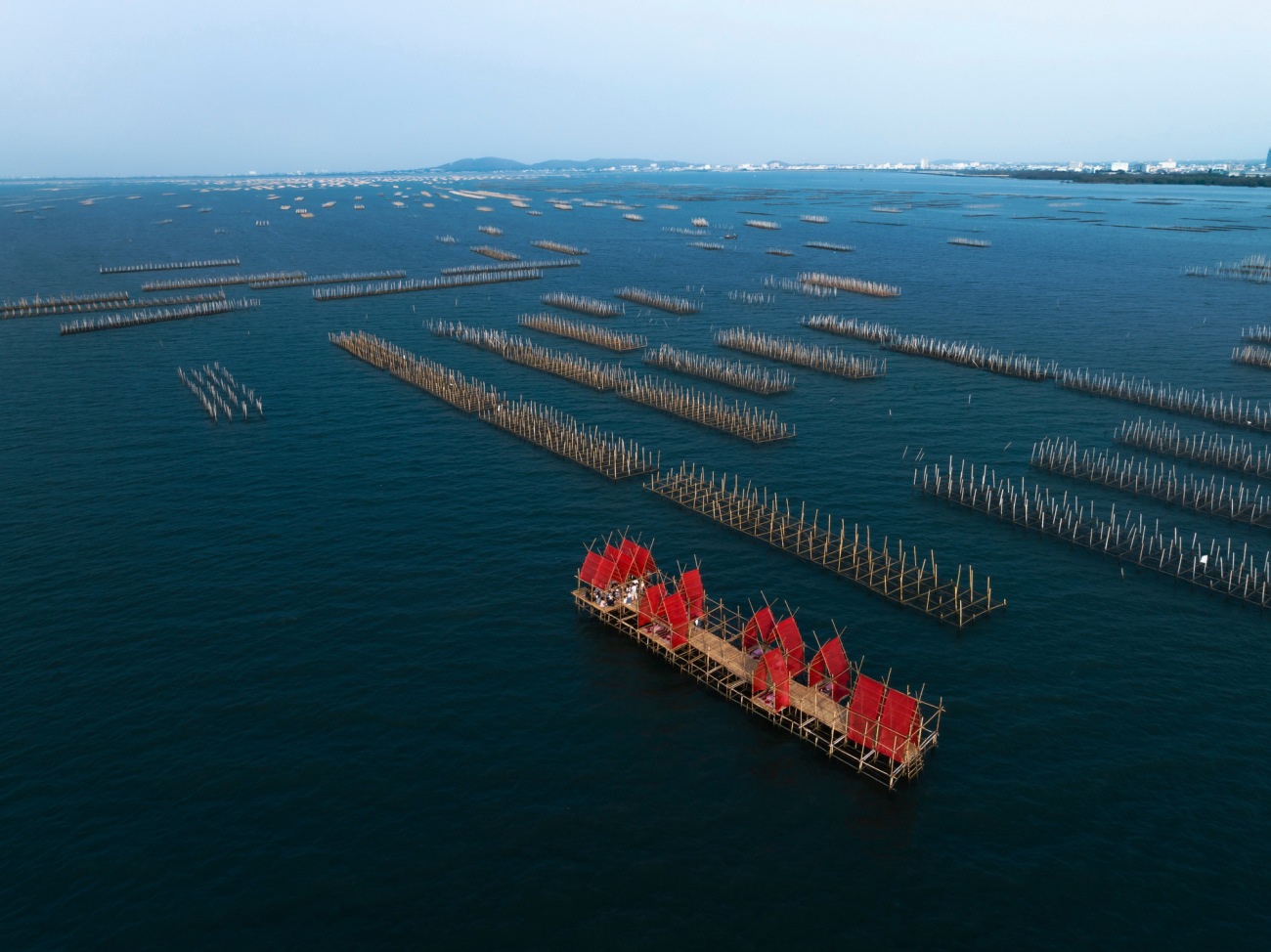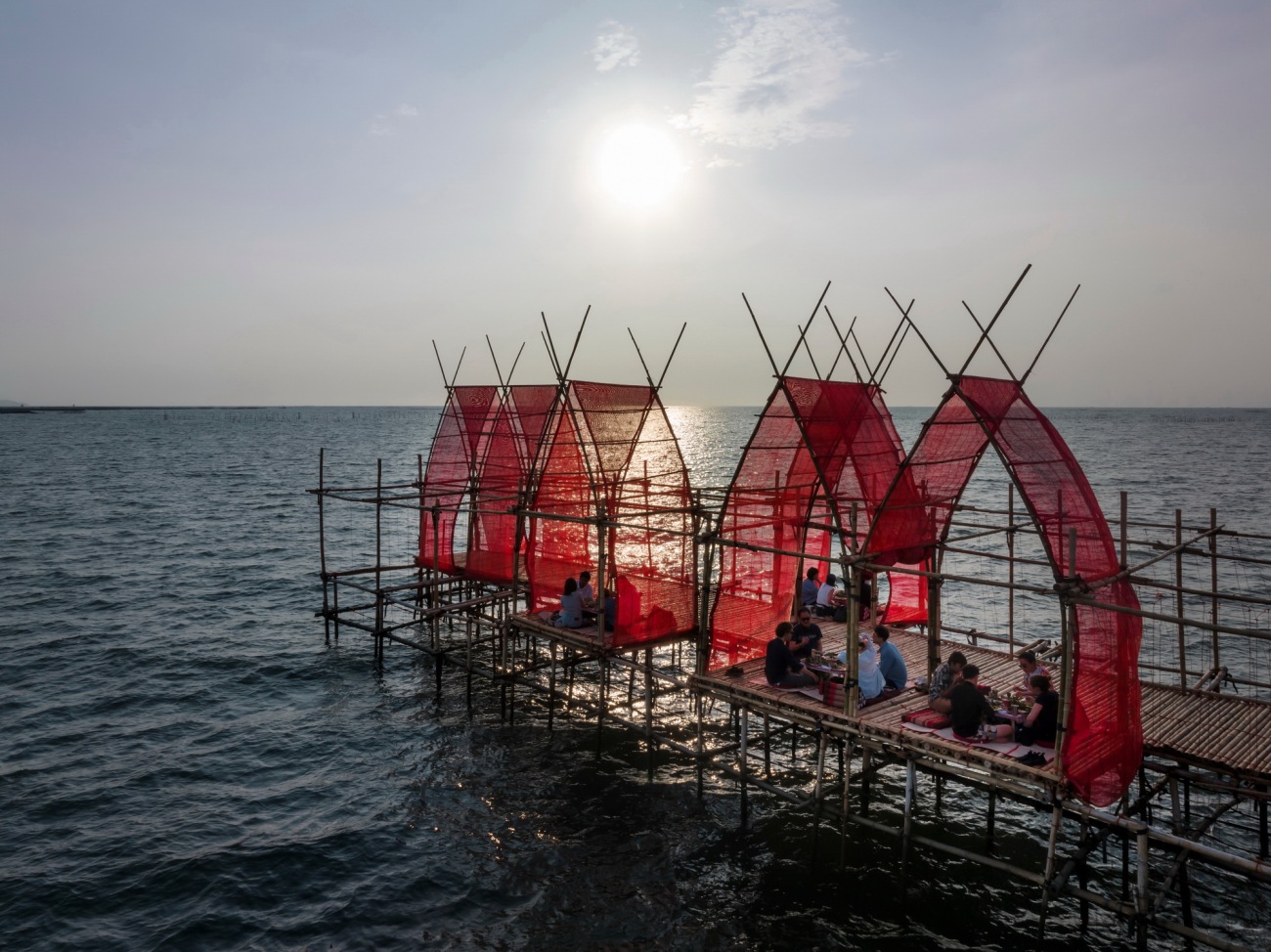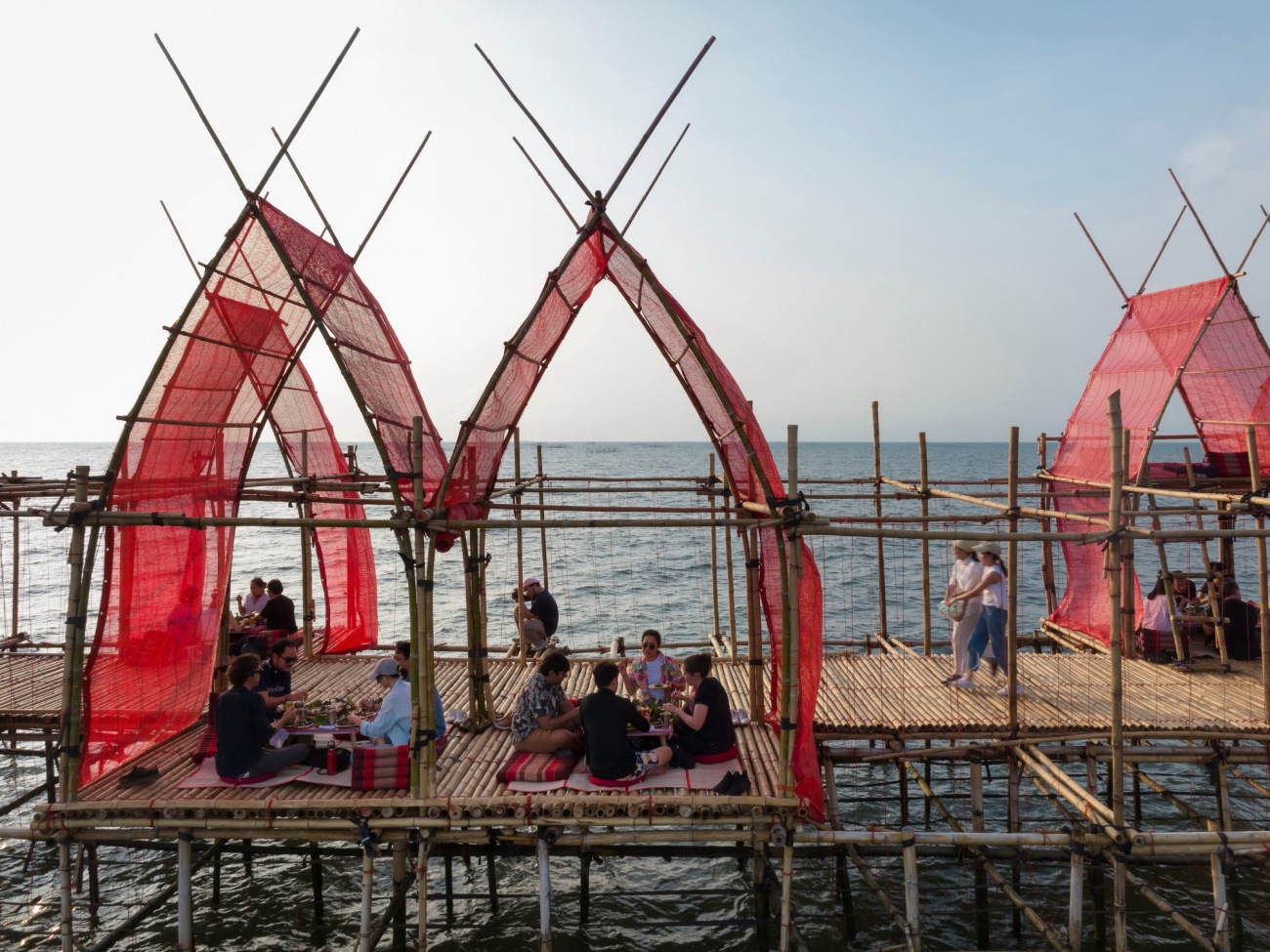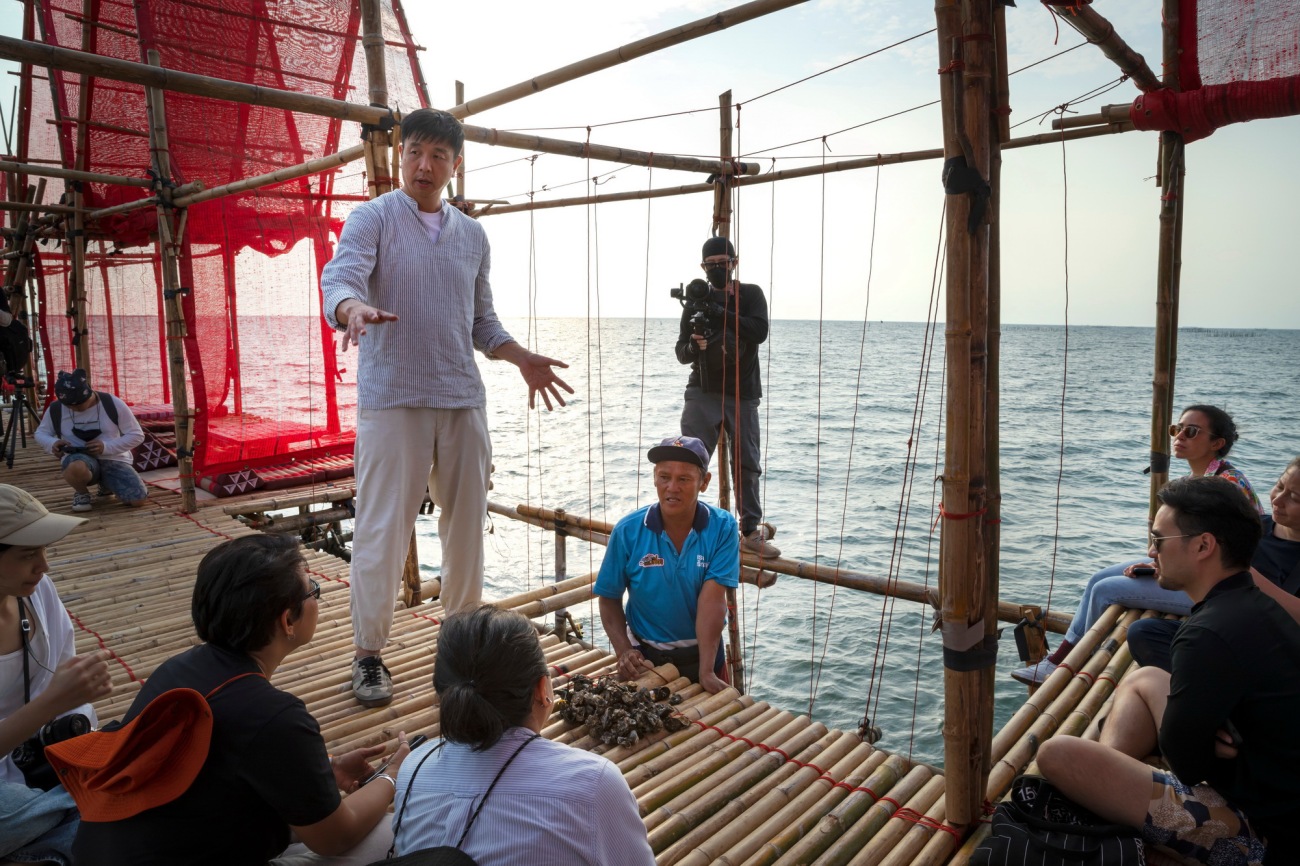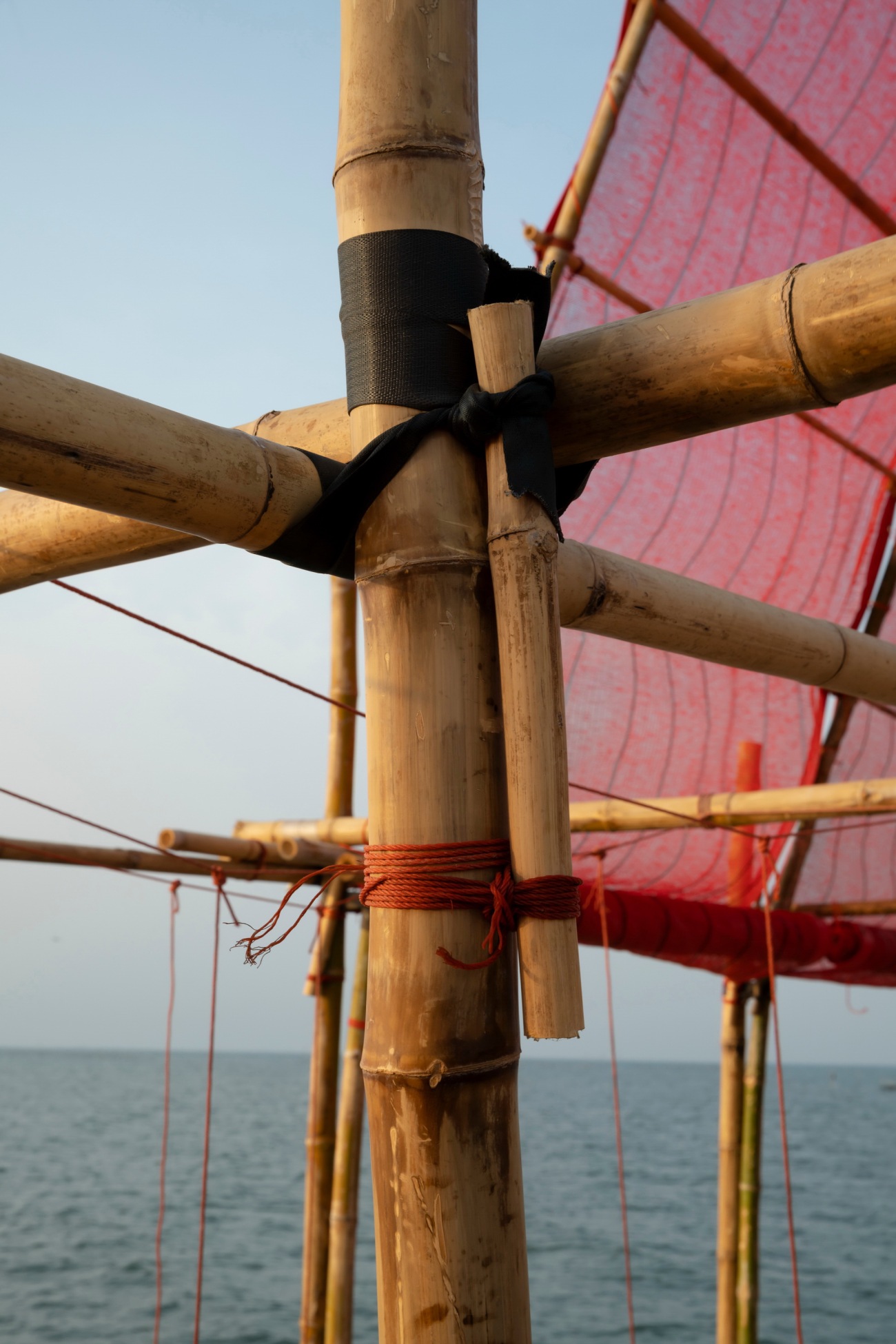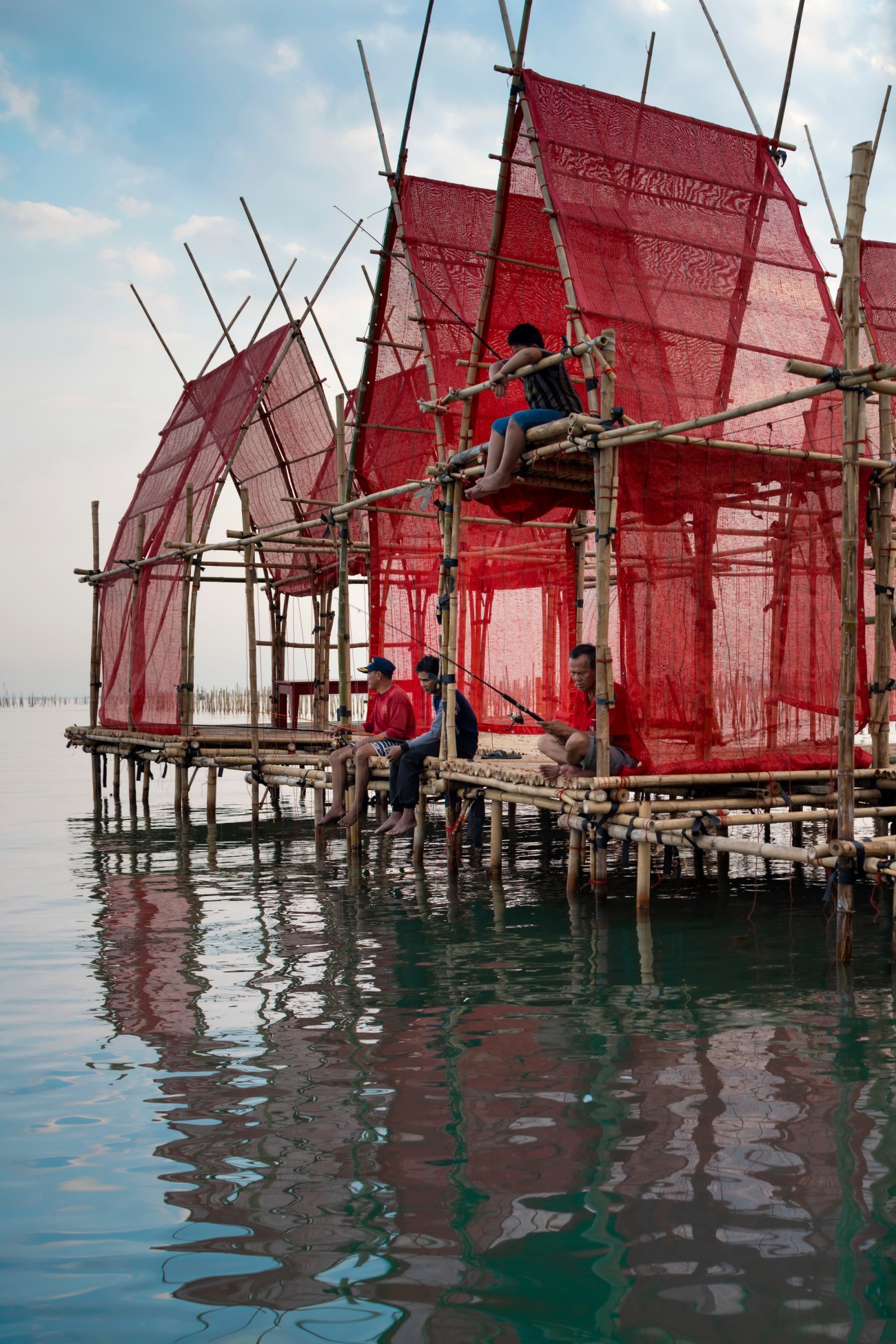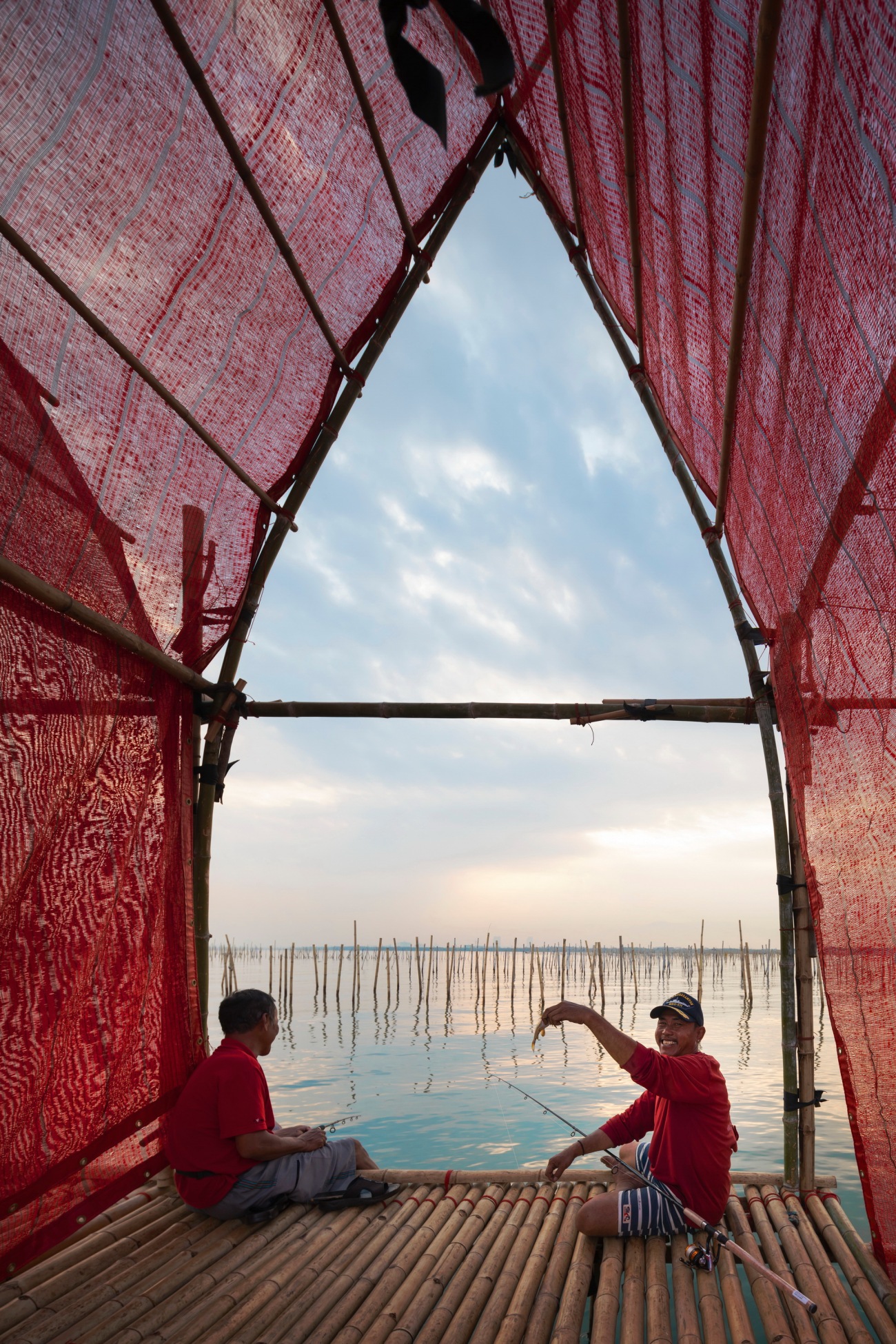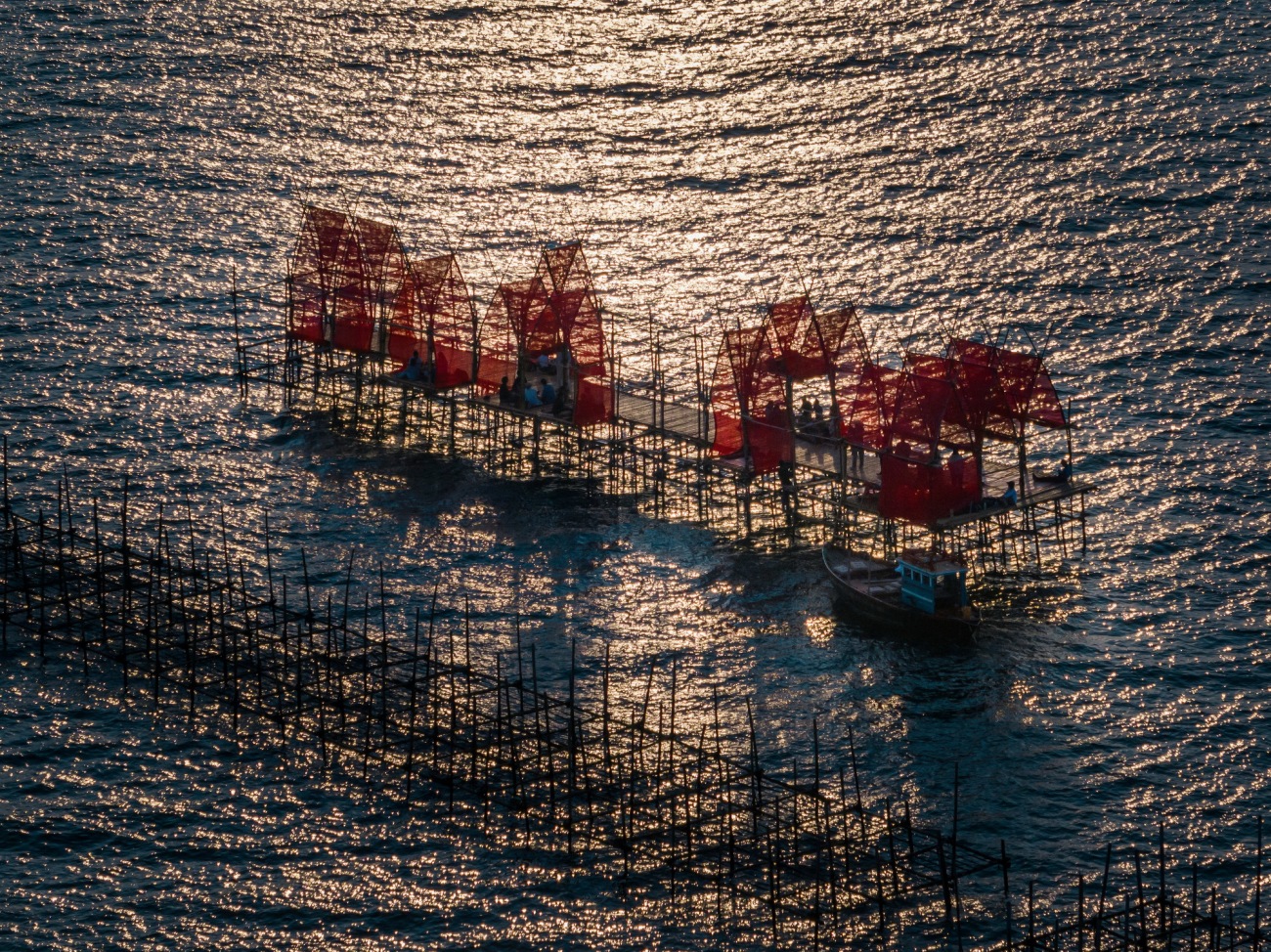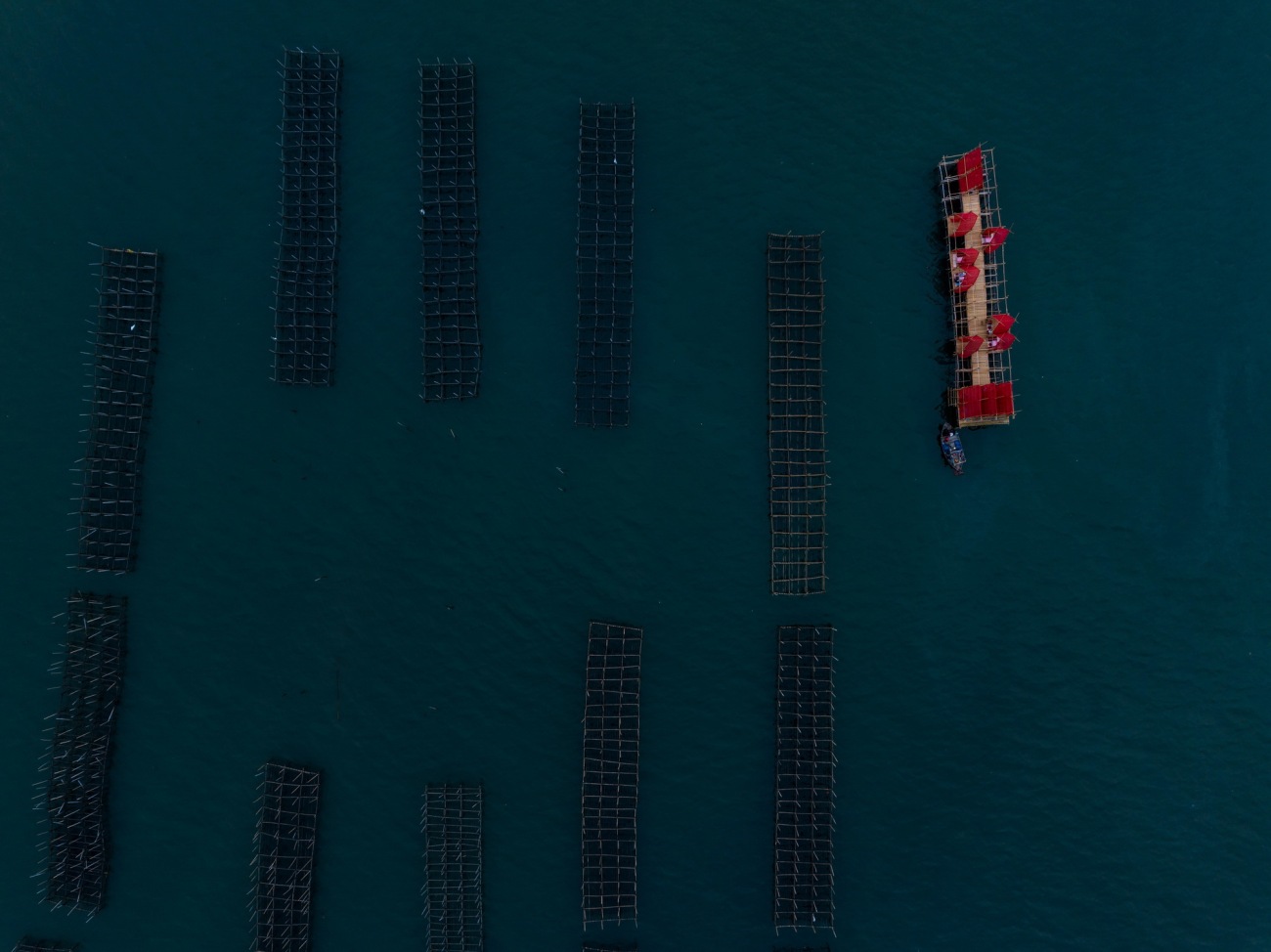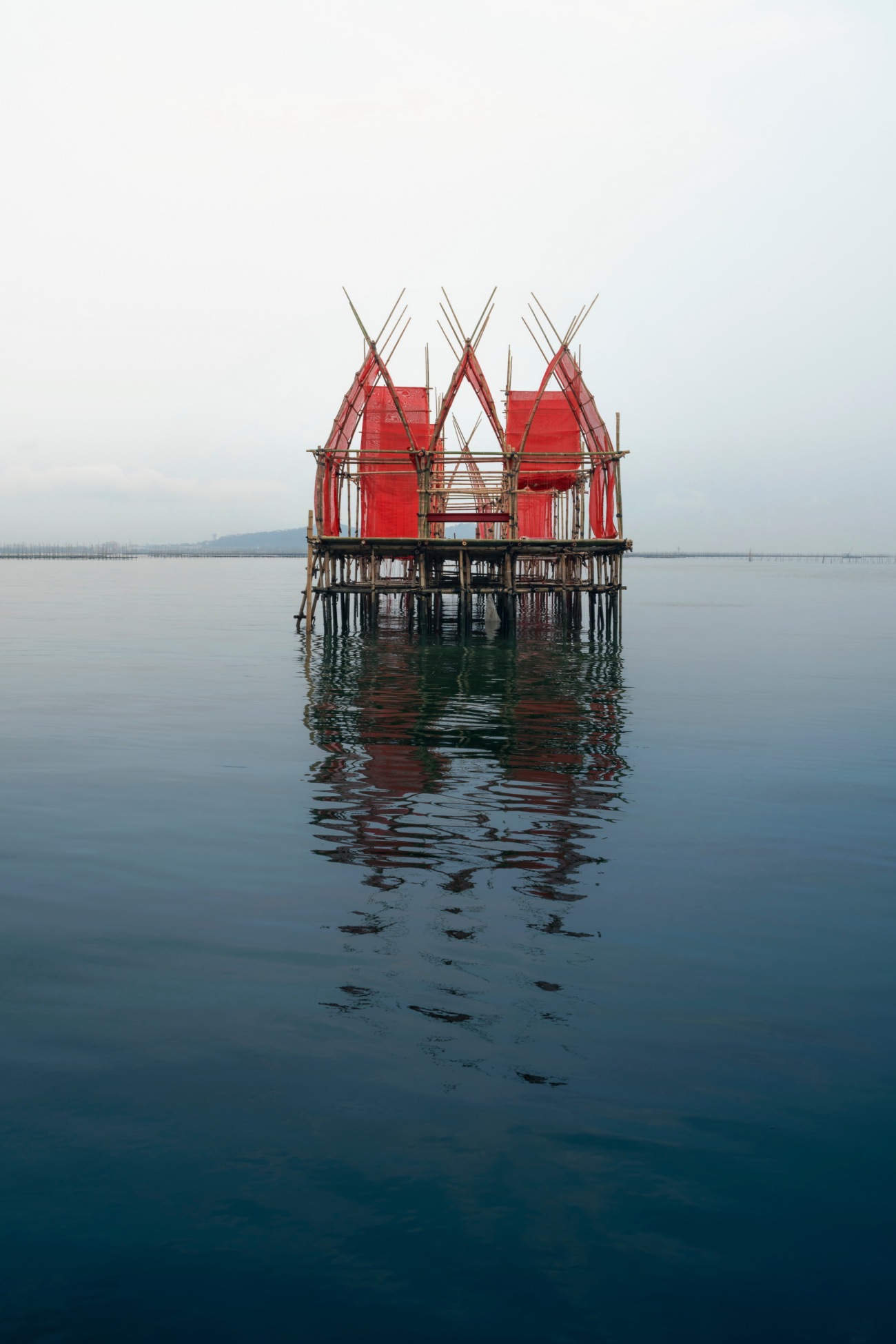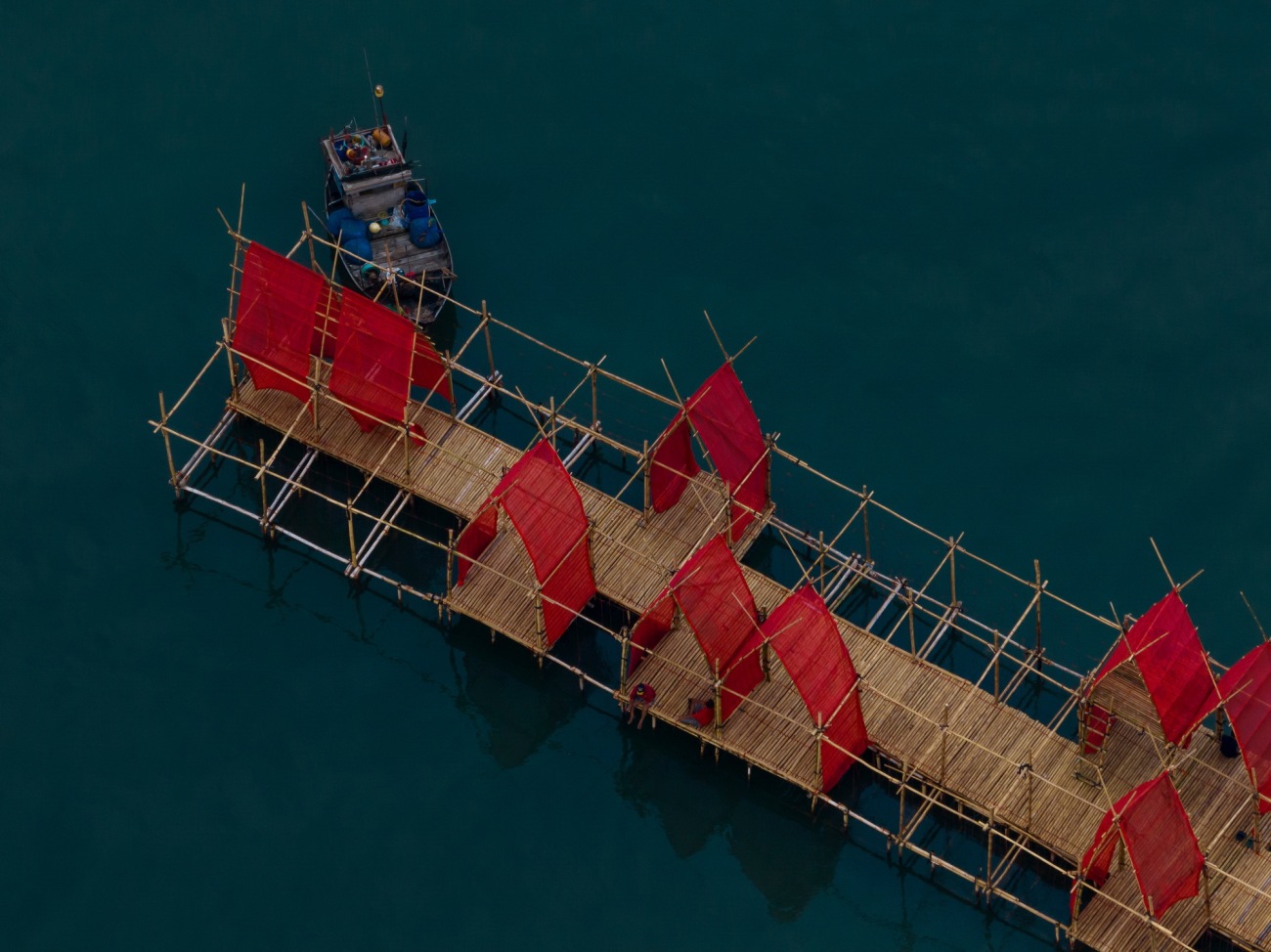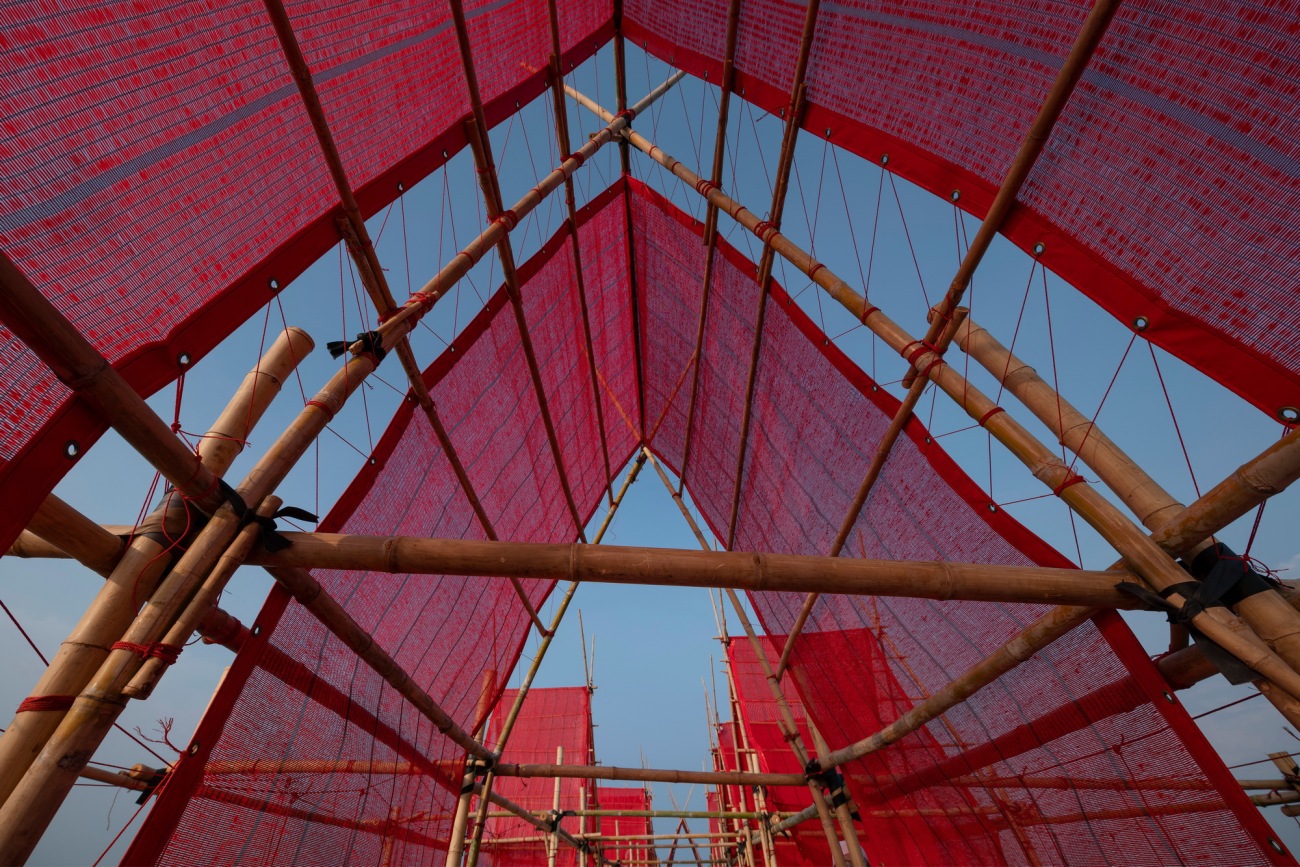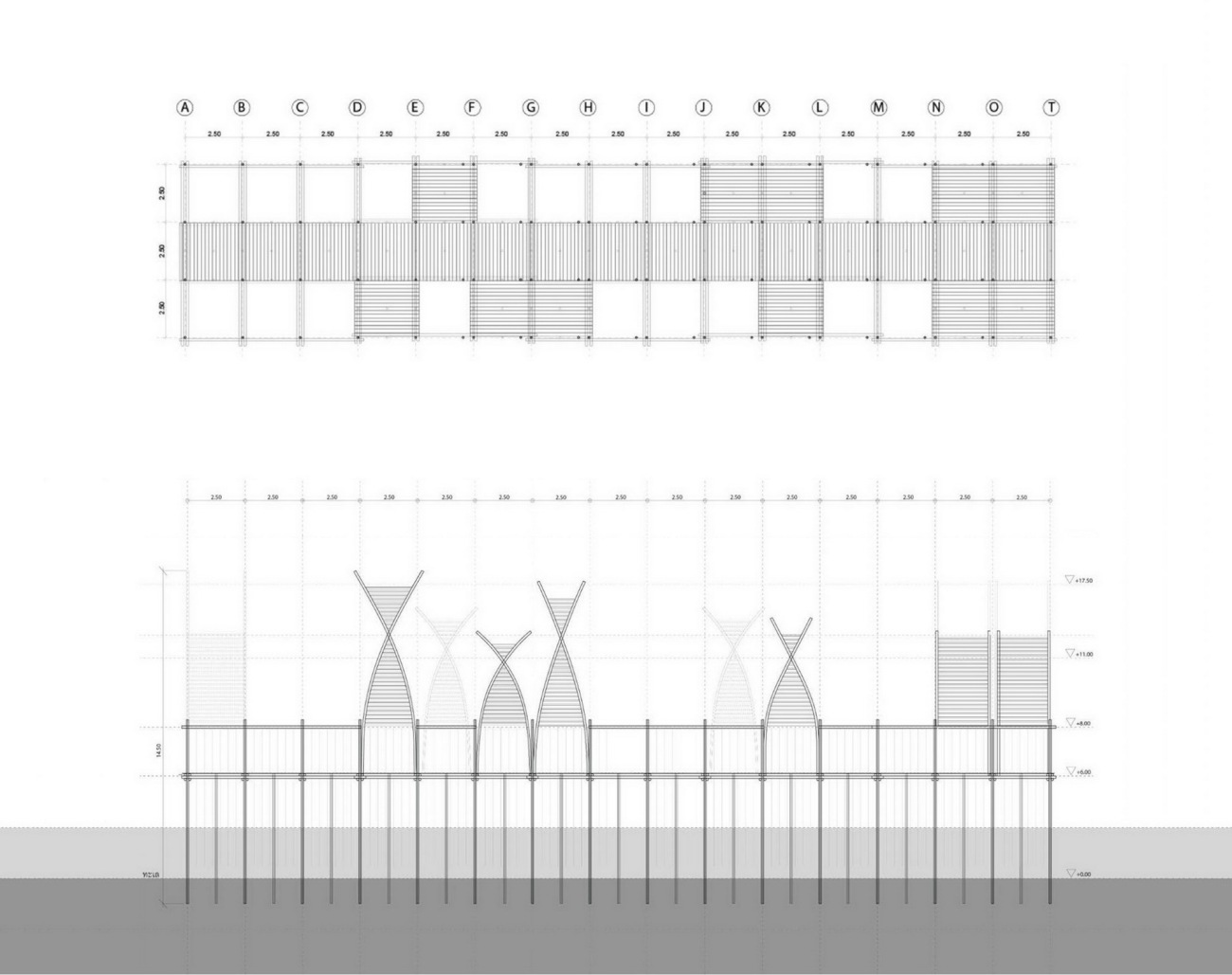| 公司: | Chat Architects | 类型: | 建筑 |
|---|---|---|---|
| 地区: | 泰国 | 标签: | 公共空间 | 办公空间 |
Chat Architects揭开了其新项目——春武里省泰国历史悠久的春武里渔村附近的Angsila牡蛎脚手架亭。
Chat Architects unveils its new project, the Angsila Oyster Scaffolding Pavilion, located off the coast of the historic Angsila fishing village in Chonburi Province, Thailand.
曾经是一个繁荣的小型渔业城镇,由于各种因素,春武里社区在过去几十年里一直在努力维持其渔业的生活方式。在生态层面上,附近工厂和新兴郊区的未经过滤的废物被释放到河流和运河中,直接流入春武里湾。由此导致的水质下降以及水生生物和海鲜养殖的盈利能力减弱,导致了传统渔业的放弃。特别是年轻一代离开家乡,前往曼谷附近的工厂、办公室或零售企业寻找更有利可图的工作。因此,Angsila牡蛎脚手架亭项目旨在通过创建一个新的牡蛎生态旅游基础设施原型,振兴春武里陷入困境的渔业和海鲜产业。
Once a thriving small-scale fishing town, the Angsila community has struggled in past decades to sustain the way of life of its fisheries due to a variety of factors. On an ecological scale, unfiltered waste from nearby factories and new suburbs is released into the rivers and canals, feeding directly into Angsila Bay. The resulting diminished water quality and decreased aquatic life and profitability in seafood cultivation has led to the abandonment of traditional fisheries. In particular, the younger generation has left their hometown to seek more profitable jobs in factories, offices, or retail businesses in nearby Bangkok. As a result, the Angsila Oyster Scaffolding Pavilion Project aims to re-vitalize Angsila's struggling fishing/seafood industry through the creation of a new oyster eco-tourism infrastructure prototype.
亭子的设计借鉴并“混合”了传统上用于牡蛎养殖的广泛使用的竹脚手架。在使用时,当地渔民会将春武里的小组游客带到亭子,游客可以亲手挑选从下方的海洋中捕捉的牡蛎,然后将其新鲜制作成食物。在一个引人注目的海岸环境中享受从海到餐桌的用餐体验。
The pavilion design draws on and “bastardizes” the widely deployed bamboo scaffolding traditionally used for oyster cultivation. When in use, local fishermen bring small groups of visitors from Angsila to the pavilion, where they can handpick oysters pulled from the ocean below, which are then prepared fresh to eat …a sea-to-table dining experience in a remarkable coastal setting.
这种新的牡蛎品尝体验使春武里的渔民能够以一种新颖而互动的方式,直接向游客传递他们的渔业历史和牡蛎养殖传统。在脚手架上直接供应养殖的贝类也确保了游客能够品尝到新鲜的海鲜,同时为春武里渔民提供了一个倡导保护春武里湾沿海生态的机会。
This new oyster-tasting experience allows the Angsila fisherman to relay their fishing history and oyster cultivation heritage directly to visitors in a new and interactive way. Serving shellfish cultivated right on the scaffolding also ensures seafood freshness for tourists, while providing the Angsila Fishermen with an opportunity to campaign for the protection of Angsila Bay’s sensitive coastal ecology.
当没有用作旅游者品尝的亭子时,这些有顶覆盖的平台就成为了当地渔民的娱乐钓鱼码头。他们会带着家人和钓竿、鱼饵以及钩子来到平台,以捕捉各种被自然吸引到下方清澈、经牡蛎和贻贝过滤的水域的本地鱼类。
When not utilized as a tasting pavilion for eco/tourists, the covered platforms become recreational fishing piers for local fishermen, who bring their families to the platform with fishing poles, bait, and hooks in order to catch a variety of local fish naturally drawn to the clean, shellfish-filtered waters surrounding the oyster and mussel bundles in the waters below.
亭子的设计在现有的日常可持续、廉价的材料、劳动力和建筑技术方面进行了创新。与传统的牡蛎脚手架一样,新的脚手架完全由春武里的渔民建造,采用当地浅海竹木建筑技术,无需使用动力工具。渔民手动将每根竹子柱类似“跳床”一样打入海底。通过购买由于本地汽车厂导致的褪色而打折的废弃汽车安全带,用于将所有竹木部件绑在一起。一块图形鲜红色的(与海湾水域的绿色相衬)农业遮阳布,通常在附近的苗圃中使用,用于为游客遮挡来自海上太阳的光线,同时允许海风通过。
The pavilion design innovates from existing every day, sustainable, inexpensive materials, labor, and construction techniques. Like traditional oyster scaffoldings, the new scaffolding is built entirely by Angsila fishermen, utilizing local shallow-ocean bamboo construction techniques that require no power tools. The fishermen manually drive each bamboo column into the ocean floor, "pogo-stick" style. Rejected car seatbelts, acquired at a discount due to discoloration from local auto plants, are used to tie all of the bamboo members together. A graphic red (complimenting the greenish bay waters), light-filtering agricultural tarp, commonly used in nearby nurseries, shades visitors from the ocean sun, yet allows for the passage of ocean breezes.
▽平面图和立面图,plan and elevation.
更新日期:2023-12-26 16:03:52
非常感谢 Chat Architects 带来的精彩项目, 查阅更多Appreciations towards Chat Architects for sharing wonderful work on hhlloo. Click to see more works!

